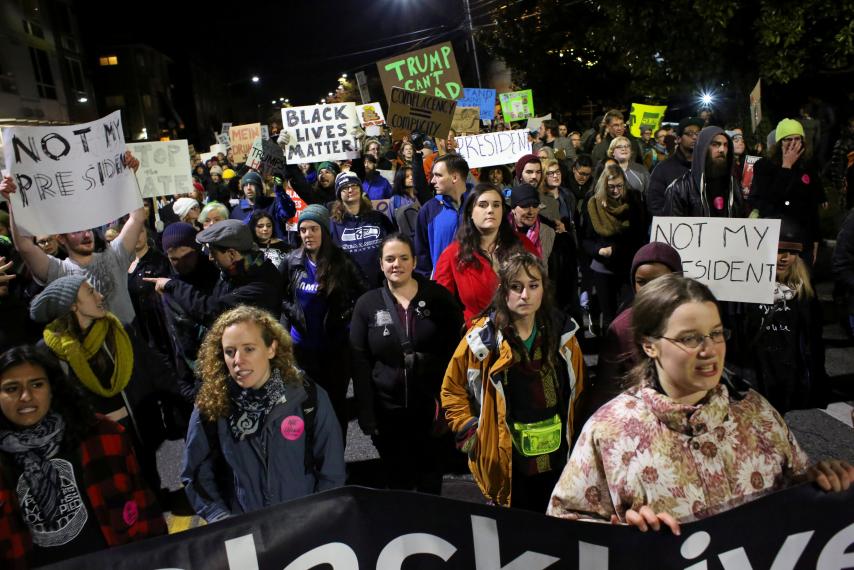The inauguration of Donald Trump certainly brought more controversy and chaos than that of any other president in this country’s history. Hundreds of protesters took to the streets in Washington, D.C., but their protest was anything but peaceful. Now, many of them are facing criminal charges, and what the jury decides will be key in determining what constitutes conspiracy and what qualifies as free speech.
The inauguration of Donald Trump certainly brought more controversy and chaos than that of any other president in this country’s history. Hundreds of protesters took to the streets in Washington, D.C., but their protest was anything but peaceful. Now, many of them are facing criminal charges, and what the jury decides will be key in determining what constitutes conspiracy and what qualifies as free speech.
A group called DisruptJ20 organized the protests, and they held meetings to prepare in the leadup to January 20, 2017. To get an idea of what the group was planning, police had undercover officers attend these meetings, but those weren’t the only people there undercover.
One person from an ultraconservative group called Project Veritas recorded a January 8 meeting with a hidden button camera. At that meeting, the head of the group told people there that the goal was to “make inauguration a giant clusterfuck.” The group also spoke about resisting attacks they would face from both Trump supporters and police officers.
On January 20, the protests quickly became dangerous and destructive. Some protesters had weapons that they used to damage property, including cars parked on the streets and local businesses. A limo ended up trashed and set on fire. In total, the protests caused over $100,000 in damage and resulted in six police officers suffering injuries.

Police had a busy day trying to keep the peace and would end up arresting 230 people. Some have criticized the police for being too aggressive with how they handled the protesters. That’s a far cry from what the protest organizers were saying about Washington, D.C.’s police force before January 20, when they called officers “trained little piggies” who were in a state of fear because of previous lawsuits.
Now, the shoe is on the other foot, as it’s the protesters who are going through lawsuits of their own. There are currently 181 people waiting to face felony charges, along with 20 who have already pleaded guilty, one to a felony, and the other 19 to misdemeanors. The case that currently has everyone’s attention is that of six individuals who are facing eight charges, six of which are felonies, because how their trial goes is likely to have a ripple effect on the trials of everyone else.
Some, including the protesters’ defense team, are framing this as an issue of free speech. And the trial does raise questions that are both interesting to think about and divisive. On the one hand, the prosecution hasn’t presented any evidence or even made the argument that any of the defendants currently on trial committed acts of violence or property damage themselves. Its argument is that they were part of a conspiracy to engage in criminal activities, which means it doesn’t matter whether they were individually guilty, because they are already guilty as part of that group.
There’s merit to that argument because like, any other right, free speech has its limits. The Second Amendment gives the right to bear arms, but not to carry “assault” rifles like the notorious AR-15, anywhere you want. During the early years of the dark web and blockchain, proponents of sites like Silk Road claimed they had a right to privacy. The FBI countered that the right to privacy doesn’t cover selling drugs. And, free speech isn’t a suitable defense for inciting violence, which was made clear when a judge dismissed it in a lawsuit against Trump himself.
The crux of this case will be whether the defendants went there with the intention of peacefully protesting or to be part of criminal activities. And that’s where the defense has a problem.
Based on what was said at the meetings before the protest, it’s clear that DisruptJ20 had discussed resisting the police. Many of the protesters had weapons or tools that could be used to damage property, and one of the defendants currently on trial, Michelle Macchio, had two bandanas covered with vinegar. Vinegar is one of the most effective ways to lessen the effects of pepper spray.
Macchio had taped a red cross on her jacket and claims she was serving as a medic. Preparations like that make it obvious that people knew this wasn’t going to be a peaceful protest. You don’t need a medic unless you’re expecting your protest to turn violent. Editor’s note: Not knowing Ms. Macchio’s actual intent, we want to point out that medics are often present at rallies for purposes other than expected violence, such as aiding diabetics with blood sugar drops, etc.
Is that enough to convict these defendants? That’s for the jury to decide, and it’s not an easy decision. A protest is a hallmark of America’s democracy, but there also must be limits to protect the safety and property of all the people there.


Join the conversation!